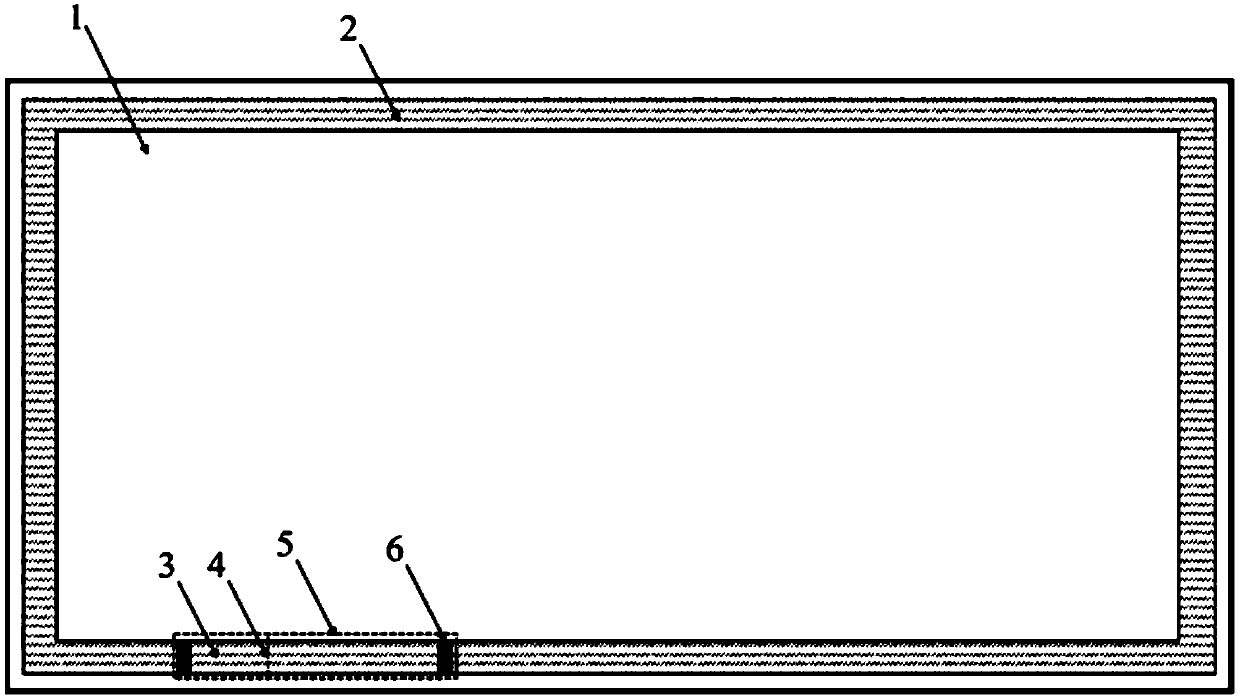Cherax quadricarinatus rice self-breeding method
The technology of red crayfish and paddy field is applied in the field of aquaculture, which can solve the problems that the supply of seedlings cannot meet the demand, increase the risk rate of breeding, and the high technical difficulty, so as to improve the comprehensive planting and breeding benefits, facilitate the breeding management, and improve the growth. The effect of efficiency
- Summary
- Abstract
- Description
- Claims
- Application Information
AI Technical Summary
Problems solved by technology
Method used
Image
Examples
Embodiment 1
[0044] Paddy field 1 is an existing 10-mu rice and shrimp comprehensive rice field 1. Paddy field 1 has a shrimp ditch 2 with a width of 3m and a depth of 1.0m. The shrimp ditch 2 is planted with Hydrilla verticillium. In October of that year, the enclosing ditch 3 was set up. The area of rice field 1 was 10 mu, and the stocking density was 3000 fish / mu. 10 tails / m 2 . It is calculated that 30,000 seedlings are required in paddy field 1, 400 female shrimps and 135 male shrimps are required, and the area of enclosure ditch 3 is set to 45m 2 . Sandbags 6 are used to seal and anti-escape facilities are set around. The anti-escape facilities are anti-escape nets 5 with a diameter of 1.2 cm. At the same time, separate anti-escape nets 4 are used to separate the enclosure ditch 3 according to the area ratio of 2:1, and female shrimp and male shrimp are stocked respectively. . When commercial shrimps are caught and put on the market, broodstock are selected, soaked in 25 mg / L...
Embodiment 2
[0046] Paddy field 1 is an existing 30-mu rice and shrimp comprehensive rice field 1. Paddy field 1 has shrimp ditch 2 with a width of 4m and a depth of 0.8m. Elodea is planted in shrimp ditch 2. The water temperature in shrimp ditch 2 is 10°C to 35°C all year round. In October of that year, the enclosure ditch 3 was set up. The area of the paddy field 1 was 30 mu, the stocking density was 5,000 fish / mu, and the estimated seedling production of broodstock was 150. The ratio of male and female broodstock was 3:1. The density of broodstock in enclosure ditch 3 was 15 tails / m 2 . It is calculated that 150,000 seedlings are required for paddy field 1, 1,000 female shrimps and 334 male shrimps are required, and the area of the enclosure ditch is set to 89m 2 . Use sandbags 6 to seal and set up anti-escape facilities around. The anti-escape facilities are anti-escape nets 5 with a diameter of 1.0 cm. At the same time, separate anti-escape nets 4 are used to separate the enclos...
PUM
 Login to View More
Login to View More Abstract
Description
Claims
Application Information
 Login to View More
Login to View More - R&D
- Intellectual Property
- Life Sciences
- Materials
- Tech Scout
- Unparalleled Data Quality
- Higher Quality Content
- 60% Fewer Hallucinations
Browse by: Latest US Patents, China's latest patents, Technical Efficacy Thesaurus, Application Domain, Technology Topic, Popular Technical Reports.
© 2025 PatSnap. All rights reserved.Legal|Privacy policy|Modern Slavery Act Transparency Statement|Sitemap|About US| Contact US: help@patsnap.com


